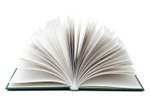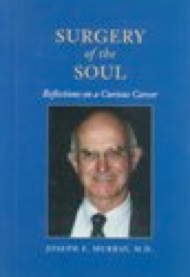Excerpts from Surgery of the Soul: Reflections on a Curious Career
Richard and Ronald Herrick--First Identical-Twin Kidney Transplant
On October 26, 1954, Richard Herrick was admitted to the Peter Bent Brigham Hospital with a diagnosis of chronic nephritis, a life-threatening inflammation of the kidneys. His physician had referred him as a possible candidate for a renal transplant, using as the donor Richard’s genetically identical twin brother Ronald.
To be as cautious and thorough as possible, Dr. Francis Moore and I were anxious to do a “test run” using a cadaver to ensure that a transplanted kidney would fit comfortably in its new site. When experimenting on dogs in the lab, I had ample time to try out a variety of sites before settling on the best one. In Richard’s case, I would have no second chance. The kidney I was transplanting was the only compatible kidney in the entire universe. I did not want it to fail for any reason--especially for a reason I had neglected to anticipate.
I left my name with pathology departments all across the city, with instructions to alert me the minute a patient died so I could use the cadaver for a trial run of the operation. Each day was one of anxious waiting, both at the office and at home. My daughter Ginny, who was eight years old at the time, recalls not being able to use the telephone for days for fear we’d miss the critical phone call. Richard’s condition was deteriorating, and I feared we’d lose him if we didn’t operate soon.
December 20th was cold and snowy. Bobby and I were home, preparing for a Christmas party for about 75 friends and neighbors. I was in charge of making the eggnog and was just about to get started when the phone rang. It was the Brigham pathology department, calling to tell me that a cadaver was available. I handed Bobby the eggnog ingredients and left immediately.
I anxiously drove the icy roads into the city and met Franny Moore in the postmortem room. I’d brought all the necessary instruments, and together we went through the entire operation, trying to think of every possible surgical mishap. The whole procedure took only a couple of hours, and I arrived home to share the last of the eggnog with the few remaining guests. The Herrick operation was scheduled for three days later. . . “
. . .















